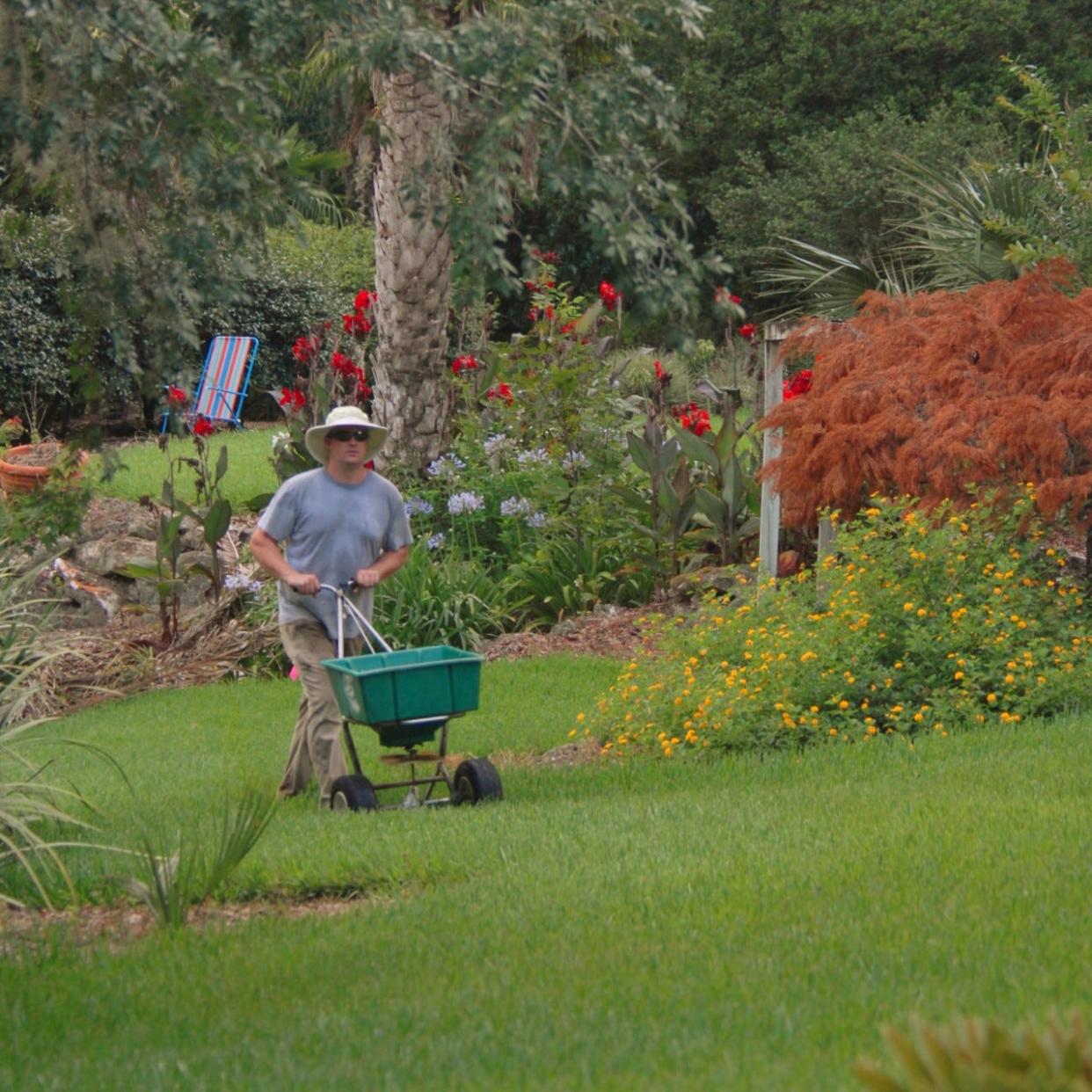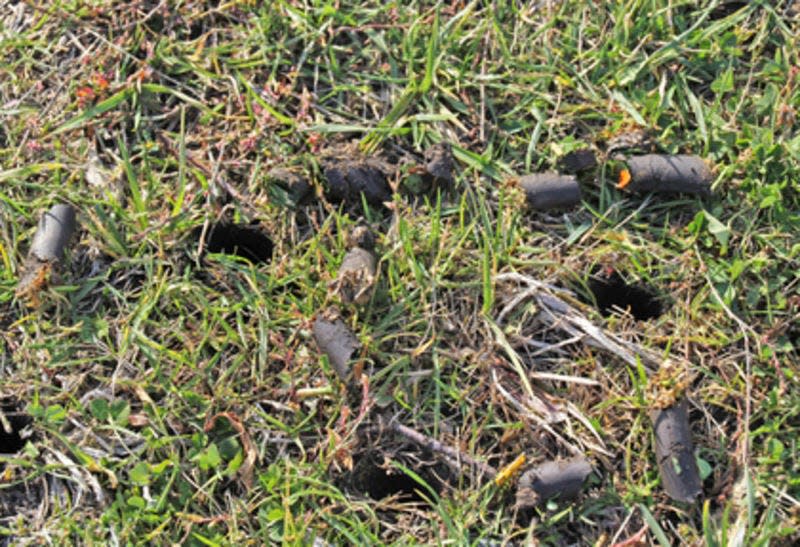Fertilizing, mowing, watering: Here's when to do them all to make your Georgia grass grow

We are officially in active lawn mode at the office. About half of our calls this time of year are grass oriented, so I thought I would share with you some turf-related things happening in the landscape now that May has arrived.

In our region, we have four types of warm season turf grasses: zoysia, bermuda, centipede and St. Augustine. We call them warm season grasses because they grow actively when the temperature is warm and go dormant when the temperature is cold. These grasses all have their own set of characteristics that make them unique. For instance, they all like full sun, but St. Augustine grass can handle a little more shade than the others. Zoysia can handle a little shade as well. On the contrary, bermuda and centipede require a minimum of 6-8 hours of full sun to be dense. Some of the grasses have a wider leaf blade while others have a very narrow fine texture. So there is plenty to choose from if you are looking for a lawn.
'I bet you have an amazing yard': Campbell Vaughn shares what he's planting this year
Why soil sampling matters
If you already have an established lawn, there is plenty to do to have a green, healthy, dense and weed-free yard – No. 1 is soil sample. Your soil has to be in good shape for roots to want to thrive. Our soil samples will give you the pH of the soil and the current levels of nutrients needed to sustain healthy plants. If the soil sample comes back and says your pH is too low, your grass literally cannot pick up the fertilizers you are paying good money for to feed it. Our soil lab will recommend an amount of lime to get that pH up to a tolerable level and make your lawn happy again. Lime takes a while to increase the pH, so the earlier you apply, the more time your soil has to adapt.
When to fertilize your lawn
Fertilizing is a fairly simple process, but seems to get convoluted. Nitrogen makes the grass grow up and potassium makes the roots grow down. Our warm season turf does not need nitrogen until it has greened up in the spring. Some of the grasses like zoysia are taking a little longer to come out of dormancy, but be patient, they will be in full swing very soon.
Don’t start your grass off with a high nitrogen boost on the first feeding. A couple of fertilizers that are readily available are 16-4-8 or 15-0-15 and make for a good first feed application. Use 6 pounds per 1,000 square feet of sod on St. Augustine, zoysia and bermudagrass. Repeat in late June and the middle of August. Zoysia and bermuda can handle a higher nitrogen rate in the late June feeding like 29-0-0. Use 3 pounds of 15-0-15 per 1,000 square feet of sod on centipede twice during the growing season. That should be enough for the centipede for the year.
Only made in Georgia: It's Vidalia onion season again and the crops are plentiful
Are you mowing right?
Mowing heights are important to keep your turf in good shape. Make sure your mower blades are sharp so you don’t tear your grass blades. Bermuda and zoysia can be kept in the 1- to 2-inch range. Centipede is maintained a little higher at 2 inches while St. Augustine needs to be mowed at 3 inches.
Don't water your lawn too much
Irrigate deep and less often. I would rather a lawn be watered once a week – running the sprinkler through two cycles in one morning – than irrigated three times a week. It is OK for your lawn to stress a little. Deep roots make for healthier lawns. If the roots don’t have to work for the water, then they will stay shallow and lead to issues down the road.

Core aerate to make grass grow
Lastly, if your soil is compacted, your grass will have trouble growing. Core aerate in late May through July. Roots need air. Compacted soils don’t allow for air to reach the roots and water absorption is difficult. Core aeration will pull plugs out of your lawn and let the water and air infiltrate. I promise you, it makes a big difference. Directly after core aeration is a great time to add lime as well.
The best way to fight weeds and disease is to have healthy grass. These things will help you get on the path to making that happen.
Reach Campbell Vaughn, the UGA Agriculture and Natural Resource agent for Richmond County, by e-mailing augusta@uga.edu.
This article originally appeared on Augusta Chronicle: Campbell Vaughn: When to mow, water, fertilize key for healthy lawn

